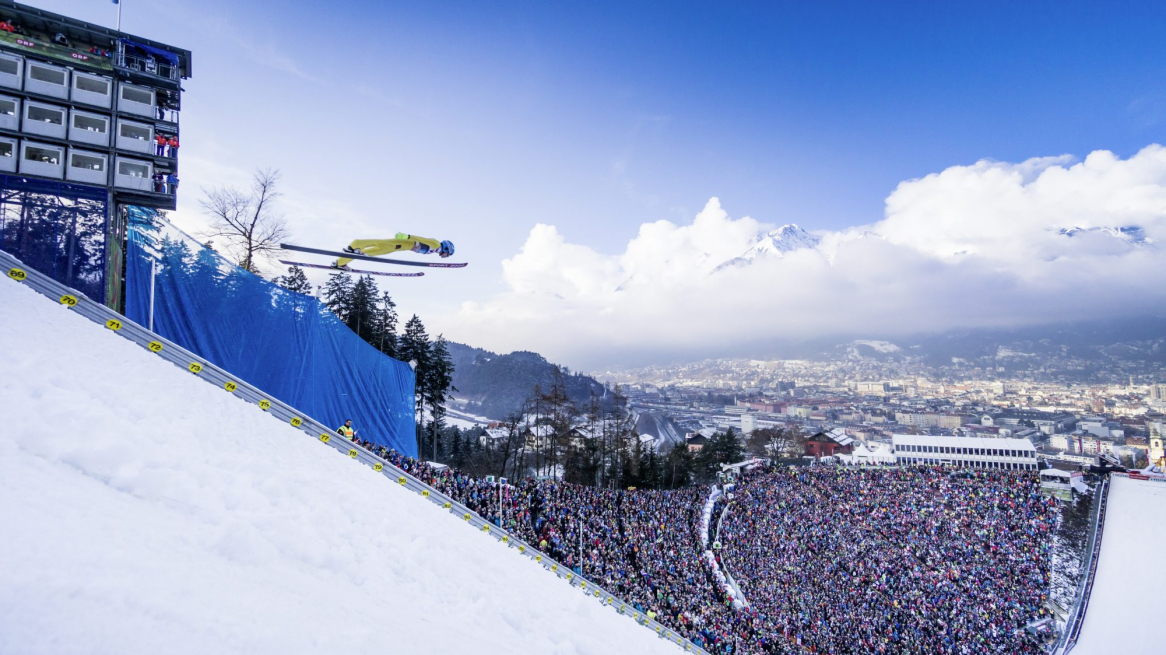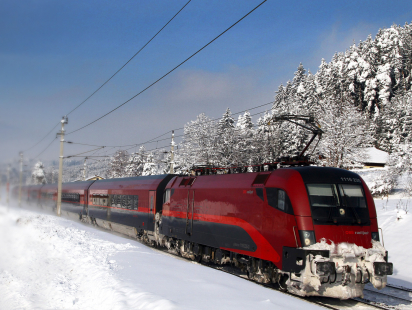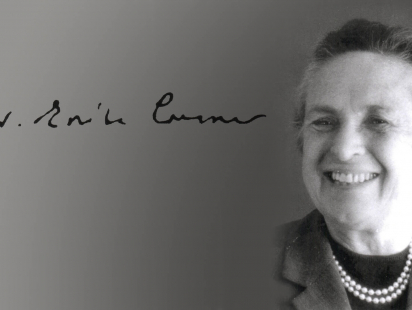In a few days from now, on February 19th, the annual FIS Nordic World Ski Championship takes off. Around 700 professional athletes from 65 different nations come to Seefeld and Innsbruck to compete against each other during this two week long and highly anticipated World Championship.
There will be 200.000 spectators uniting at this world-class event, but for those of you who need some more persuasion, here’s an overview of what you can expect at the FIS Nordic World Ski Championship 2019.
Brief history of the Nordic Skiing World Championships
Seefeld has hosted the Olympic Nordic disciplines three times – in 1964 & 1976, and again in 2012 for the Youth Olympics – and hosted the WSC for the first time in 1985. With the experience and know-how of the Austrian Ski Association, excellent local infrastructure, award-winning trails, ingenious sustainability concepts and outstanding sport competence, Seefeld shines for the second time as World Cup host this year.

This year’s trophies are so beautiful… Designed by Swarovski. © Swarovski Crystal Worlds
Nordic Skiing disciplines
The FIS Nordic World Ski Championship consists of 3 disciplines: Cross-Country, Ski Jumping, and Nordic Combined.
Cross-Country Skiing
In Cross-Country Skiing, the skier relies solely on their own locomotion to move on the snow. It is done with very thin skis and longer sticks than those used in Alpine skiing. This discipline will be held in the cross-country arena and area around Seefeld.
Cross-country skiing is the oldest type of skiing in the world. It emerged from a need to travel over snow-covered terrain in Northern Europe and developed as a sport at the end of the 19th century. There are two types of cross-country skiing: the classic style and a newer style called either ‘freestyle’ or ‘skating’, introduced by American Bill Koch. In the classic style the skis follow a parallel track with skiers only moving their skis forward, while in the skating style the skier pushes the ski forwards and outwards at a 45 degree angle to gain more speed and velocity. In skiathlons athletes are allowed to use both methods during the race.
The races themselves are also held in different types and lengths. The competition will be held both individually and as a team performance, with a minimum length of 1,5km in the sprints and a maximum length of 50km in the men’s mass start.

Here you can see the skier in blue performing the skating style, while the skier in red is using the classic style to move in the tracks. © Stephan Elsler
Ski Jumping
Ski Jumping is the discipline whereby skiers descend from a specially designed ramp with the objective to jump as far as possible. Not only the distance matters however – the judges also consider the style, bodyweight, gate factor (variable outdoor conditions) and wind conditions. Both Seefeld (Toni-Seelos-Olympiaschanze) and Innsbruck (Bergisel Skisprungschanze) house a ramp specifically made for ski jumping competitions, and both will operate during the WSC.

Toni-Seelos-Olympiaschanze in Seefeld ready for the the WSC! © Stephan Elsler
Over the past hundred years, ski jumping has evolved enormously with different jumping techniques allowing jumpers to achieve ever greater distances.
For example, in the early days of ski jumping, the skiers used the Kongsberger technique. This included bending your body from the hip, keeping your skis parallel against each other and holding your hand in front of you. Using this technique, Austrian Joseph ‘Sepp’ Bradl became the first to jump more than 100 metres when he jumped 101 metres in 1936. Have a look at the video below, quite amazing how the sport evolved and how basic the equipment was back then.
Nordic Combined
Nordic Combined is the combination of Ski Jumping and a Cross-Country race. The winner of the Nordic combined is the athlete with the most points accumulated during both disciplines.
Another technique on how the Nordic combined discipline can be performed is with the Gundersen method. This method was introduced in the 1980s by Gunder Gunderson (what a brilliant name?!), and has been used in big events like the FIS Nordic WSC and Winter Olympics ever since. The skier with the highest score on the ski jump will start the cross-country race first. Whereafter the other athletes follow with a time interval depending on the amount of points they have less than the one on the first place. Using this method the cross-country skiing part of the Nordic combined turned from a point-base system, where all athletes start with a set interval, to a pursuit race whereby the interval depends on your result on previous the ski jump.

Athletes during their Nordic combined race. © Stephan Elsler
How to get to the 2019 Nordic Skiing Championships?
Don’t come by car! I mean, you can, but why would you when there is free public transport?
On the day indicated on all valid tickets, all VVT and ÖBB connections can be used free of charge throughout Tirol. If you have never taken the train through the beautiful alps I can definitely recommend it! It’s an experience in its own right.
The regional busses in the 5 towns covering the Olympic region are also free with a ticket during the event. Have a look on the events website to know more about the traffic and transport to and from the event.

Train station in Seefeld. © David Johansson
Where to buy tickets?
You can buy tickets for both the events in Seefeld and Innsbruck here. Day- and Weekend passes are available. The price varies from the location and the type of seats you would like.
The Bergisel Ski Jump in Innsbruck
The history of the Bergisel Skisprungschanze dates back more than 90 years, when on January 23rd 1927 the first Tyrolean Ski Jump Championship was held. One year later, the first jump with wooden skis was made with a run of 100m and a jump-distance of 53m. On January 3rd 1952 the first Four Hills Tournament was held for the first time in Innsbruck.

Beautiful picture of Bergisel by evening fall. © SC Bergisel
Preparing the Bergisel Ski Jump for the Nordic World Championships
At the start of January, the Four Hills Tournament was held at the Bergisel Skisprungschanze. Much of the temporary infrastructure therefore could stay, e.g. all platforms for cameras, photographers and the medal ceremonies, all containers (e.g. the athletes village), the VIP marquee and the wind net remained in place. During the last week service contractors installed the videowall, sonication, TV presenter platforms and some other minor constructions.
One of the major challenges the team at Bergisel faced was not building or constructing something, it was actually getting rid of all the snow in the spectator circles. Have a look at the photo and video below to see how much snow they had to clear. Even the Austrian Military showed up to give them a hand shovelling all the snow!

Many people helping out to get rid of all the snow in the spectator circles. © SC Bergisel
The most important thing of course is the preparation of the jump itself. The preparations will commence this week so the hill will be perfectly shaped at the start of the WSC. Around 200 people are involved in the preparations and execution of the event at Bergisel in Innsbruck, not counting all the suppliers and partners. This shows how much work and effort it takes to host an event at this scale.

This is how it will look like when people spectating the WSC. The amazing view of Innsbruck is included 😉 © SC Bergisel
To stay up-to-date during the WSC and other events the Bergisel Ski Jump hosts, make sure to follow them on Facebook and Instagram!
Did you know…
- a ski jump ramp actually has about a 10.5-degree down angle?
- the current World records for Ski Jumping are 253.5m for men by Stefan Kraft and 127.5m for women by Anette Sagen?
- Nordic ski styles were introduced in the Olympic Winter Games more than 20 years before the Alpine (downhill and slalom) disciplines?
- The King and Queen or Norway are attending the WSC this year? Keep an eye out for them!
Similar articles
The zoo is at the cradle of my love for Tyrol. It awakened in me the longing…
I commute a lot between Innsbruck and Vienna and I know the advantages of both cities. Many…
The darker and colder it gets outside, the cozier and cozier it gets inside. When, if not…
The physical chemist Erika Cremer (1900-1996) is one of the most important research personalities of the University…





